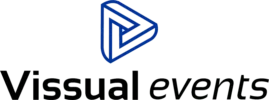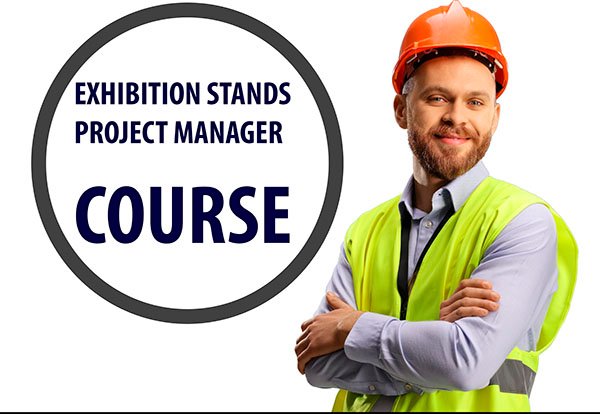International fairs: ensure success
Don't panic, but you don't have to fall asleep either: International fairs are serious things since normally you have to carry your product, make special catalogues, deal with suppliers and foreign clients and all of this... in another language. You are the king of English and traveling is your thing?... even so, be careful. Especially on these points:

Logistics
Airplane tickets
Buy in advance, you know...
Hotels
It is essential to book many months before the fair. The cheapest hotels near the fairs usually sell out up to a year before the fair. If you want to pay a reasonable price for a nice hotel room and, above all, close to the fair, take this into account. ..
Transport of your product
Make sure that the material arrives at the fair on time. If there is an incident in transport, you may be left with nothing to expose. It is also very important that you control the arrival of the material at the fair. If you have to go through customs, the issue is even more complicated and you need to hire a customs agent to help you manage it. If you move within the EU you will not have problems. You can send it before the fair and pay to have it stored in the warehouses of the fair, this is more expensive, but it is the safest. Be careful, if you are going to take your product to the builder's stand. Think that the packaging has to be very resistant and that the carpenter will not be responsible if your products are damaged. Unloading at the fair is often done against the clock and unloading a particleboard wall from a truck is not the same as unloading an electron microscope...
schedule download
It is very important that you make sure that the forklift (bull) is reserved for the unloading of your truck and that you have a defined schedule if the fair requires it. In cases where the fair does not have access hours, you have to make sure that your builder will be in line first thing in the morning at the access or at the fair control post waiting for the ok for access.
Services
Be very careful with the deadlines
Be careful with some services, fairs in some countries are very picky and may force you to make changes to your stand, it is important that this happens before production has started. Pay special attention to rigging and complex structures such as mezzanines. The fairs of some countries such as Germany have a procedure that takes a long time to give the go-ahead. The metal structures cannot be modified at the fair, so it is very important that you have the approval of the fair at least 1 month before assembly. For this, you must start the procedures with the fair no less than 5 months before.
Do not forget to pay the services
If services such as water and electricity are not paid before the start of the fair, you will not have electricity at your booth. In some fairs the same thing happens with rigging and other services. Make sure everything is paid for before the start date.
Check that the services are installed
Ask your builder to check that all the services and equipment are in place when you arrive at your space on the first day of assembly. Ask for photos and measurements if possible to contrast them with the plans you have sent to the fair (especially water and electricity).
You can obtain more information about contracting services in this post..
Construction
Make sure the assembler starts on time.
Make sure your stand is going to start on the first day of assembly: Don't stay at the end of the line! Ask for photos during assembly if you are not going to visit the stand on the first day. A day without work at the show can mean a decrease in labor and finishing for the 25%!
Number of people who make your stand
Ask how many people will be dedicated exclusively to your stand. I assure you that there is nothing sadder than seeing how the end of the assembly time approaches and the whole team leaves for another stand, without having finished yours as you expected. Call your customers! and ask them how they have fared in other productions... don't hesitate, you will remember what you read.
You can obtain more information about the people needed to set up a stand in this post..
Services
Try to use as little paint as possible.
Painting is the big problem during the fair. The required drying time (at least 6 hours) if you need to stick graphics on top... conditions the work throughout the stand. What can you do to avoid it? Some solutions may be: making the walls in melamine, using printed textile stapled to the walls instead of self-adhesive graphics, and finally hiring a modular stand
Check i situ if the dimensions of the graphics are correct (the first day of assembly)
Normally the graphics for stands are checked in the workshop based on the plans, but it often happens that in situ things are not as in the plans. That is why it is important that in the first days of assembly you check that the graphics correspond to the size of the walls and spaces where they are going to be placed. This will save you having to find someone to print them on the last day of assembly. Keep in mind that if your provider is foreign, they will not have much reaction capacity. (This is where working with local suppliers is justified.)
Do not neglect disassembly!
You should know that teardowns are very different from mounts. While in the latter there is meticulous work in the carpentry and care of the other stands, in the disassembly there is a kind of controlled chaos. for this reason you have to make sure that your product is not still on the stand while it is dismantled. Think about how you are going to pack it and who is going to pack it, since it has to travel as safely as it arrived at the fair.

Checklist for the organization of international trade fairs.
It is very important to make lists and schedule calls or meetings to review with your provider what is missing. Only then will you know if things are on the right track. Here is a possible checklist to control your participation in the next fair. :

Days before the fair:
1- Space rental
2- Space payment
3- Hotel and flight reservation if necessary
4- Sending graphic material to the fair for the exhibitors' catalog
5- Hiring your stand
6- Advance payment to your provider
7- Sending plans to the organizer for approval of the stand
8- Verify if static calculations (Rigging-tilts) are necessary and that the supplier has sent them to the fair if possible 3 months before the fair.
9- Give your provider the access codes to the service platform so that you can place the necessary services in the shopping cart.
10- Hiring of services: payment of the services that have been saved in the shopping cart. If it is not done through the platform, do it by bank transfer once the budget for the fair has been received.
11- Sending location plans of the services to the organizer and static calculation if applicable.
12- Sending of the fire risk and prevention file, if any.
13- Receipt of homologation of assembly and structures if applicable.
14- Payment of the assembly fee, if any
15- Preparation of the graph for assembly: verification of measurements
16- Delivery of the graph to the supplier
17- Delivery of the Pantone/Ral to the supplier for the color painting of your stand
18- Special packaging of your products for transport
19- Preparation of brochures, cards and promotional material for your company.
During the assembly of the stand:
20- Sending transport with promotional material to the fair
21- Verification that the supplier has assembly passes
22- Verification with your supplier of all the furniture, electrical outlets and details of your stand before assembly
23- Verification of the start of the stand on the 1st day of assembly of the fair.
24- Checking the arrival of material at the fair
25- Verification of existence of all contracted services.
26- Order of photos of the 1st day of assembly if you were not at the fair.
27- Order of photos of the 2nd day of assembly if you were not at the fair.
28- Request for a photo of the 3rd day of assembly if you were not at the fair.
29- Request for a photo of the 4th day of assembly if you were not at the fair.
30- Verification of technical inspection ok at the fair, if any.
31- Notice of arrival to the supplier to coordinate the delivery of the stand.
32- Tour of the entire stand making the necessary paint touch-ups, if any, and solving graphic errors.
33- Removal of plastic carpet and installation of all furniture
34- Cleaning of the stand for delivery
35- Verification of cleaning of the stand during the night in case of being contracted with a fair
36- Photograph errors and failures subject to payment
37- Signature of conformity to the supplier.
During disassembly:
38-Pack your product correctly at the end of the fair.39-Verify the time and hire a bull to load your products on a truck.40-Pick up your product at the fair by the transport company.
Don't miss the next chapter of this exciting adventure!
I hope this information has been useful to you. In the next post I will talk about a fundamental issue when hiring your space at the fair: What type of stand suits your needs? How to choose your space at the fair?





